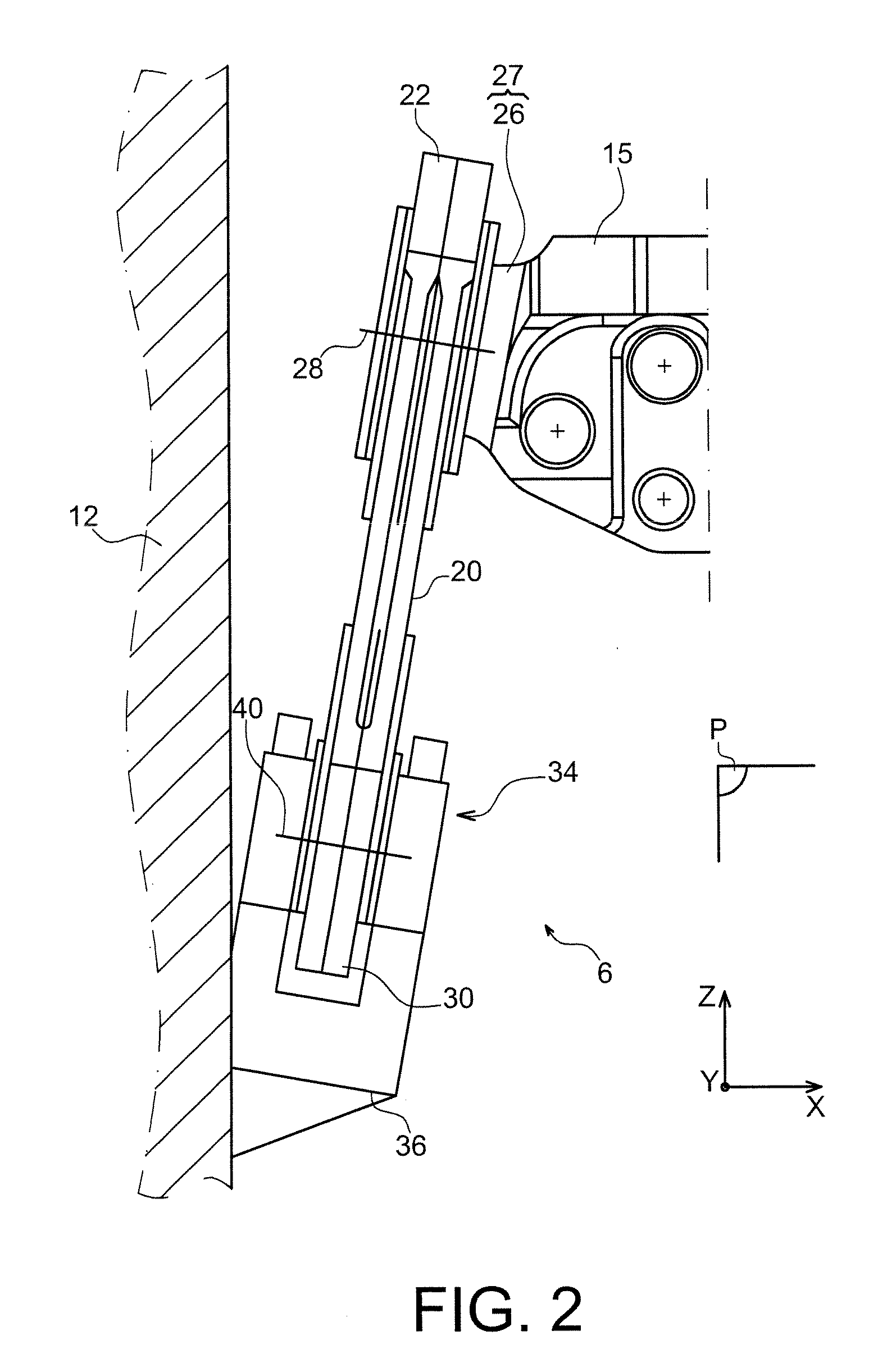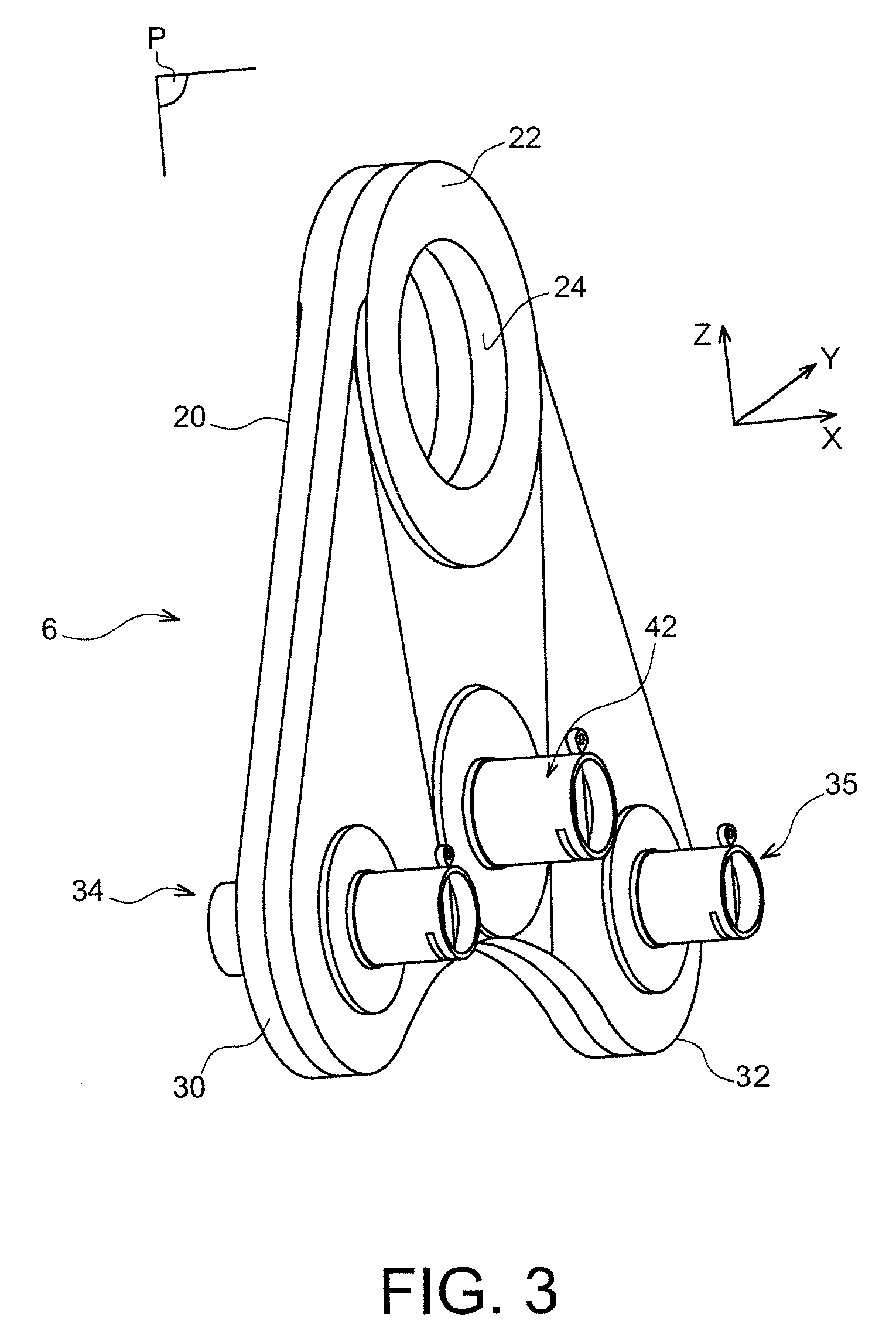Engine Mount For an Aircraft, to be Placed Between an Engine and an Engin Mounting Structure
a technology for aircraft and mounting structures, which is applied in the direction of machines/engines, mechanical equipment, transportation and packaging, etc., can solve the problems of difficult installation of attachments, difficulty in accessing the forward end of pins passing through the clevis, and difficulty in reducing the safety of collisions, so as to reduce the risk of collisions, increase the longitudinal separation, and increase the longitudinal separation
- Summary
- Abstract
- Description
- Claims
- Application Information
AI Technical Summary
Benefits of technology
Problems solved by technology
Method used
Image
Examples
Embodiment Construction
[0033]FIG. 1 shows an aircraft engine assembly 1 designed to be fixed under a wing of this aircraft (shown only diagrammatically and marked as numeric reference 3), this assembly 1 being in the form of a preferred embodiment of this invention.
[0034]Globally, the engine assembly 1 is composed of an engine such as a turbojet 2, an EMS 4 and a plurality of engine attachments 6, 8, 9 inserted between a rigid structure 10 of the EMS 4 and the turbojet 2. For guidance, note that the assembly 1 is designed to be surrounded by a pod (not shown) and the EMS 4 is fitted with another series of attachments (not shown) to suspend this assembly 1 under the aircraft wing.
[0035]In all of the following description, by convention, X is the longitudinal direction of the EMS 4 that can be considered to be the same as the longitudinal direction of the turbojet 2, this direction X being parallel to the longitudinal axis 5 of this turbojet 2. Furthermore, Y is the direction transverse from the EMS 4 and c...
PUM
 Login to View More
Login to View More Abstract
Description
Claims
Application Information
 Login to View More
Login to View More - R&D
- Intellectual Property
- Life Sciences
- Materials
- Tech Scout
- Unparalleled Data Quality
- Higher Quality Content
- 60% Fewer Hallucinations
Browse by: Latest US Patents, China's latest patents, Technical Efficacy Thesaurus, Application Domain, Technology Topic, Popular Technical Reports.
© 2025 PatSnap. All rights reserved.Legal|Privacy policy|Modern Slavery Act Transparency Statement|Sitemap|About US| Contact US: help@patsnap.com



